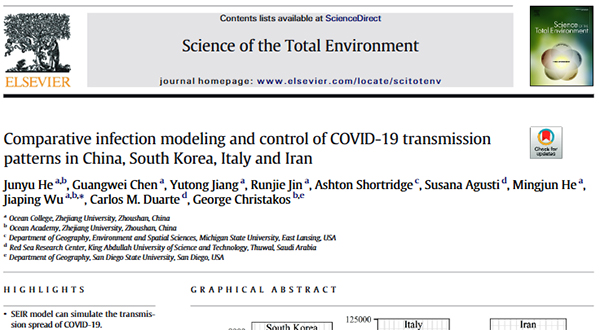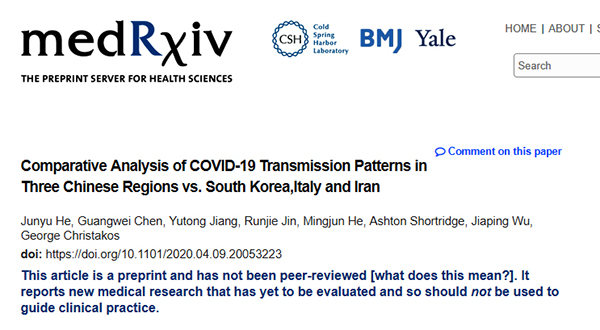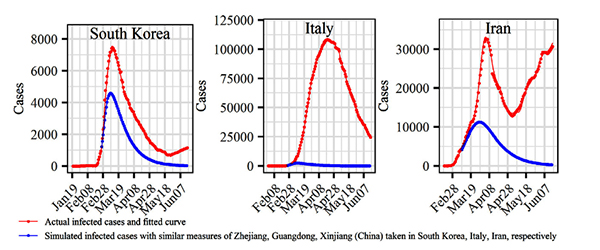NEWS
Professor Christakos' team from the Ocean College have made important result in the study of spatial epidemiology of COVID-19
Professor Christakos' team from the Ocean College have made important progress in the study of spatial epidemiology of COVID-19, the related results “Comparative Analysis of COVID-19 Transmission Patterns in Three Chinese Regions vs. South Korea, Italy and Iran” has been published online in Science of the Total Environment, after being pre-printed in MedRXIV on April 9th.


Since January 23, Zhejiang launched a major public health emergency level response, in collaboration with Professor Shortridge of Environmental and Spatial Informatics at Michigan State University and Profs Duarte and Agusti of the Red Sea Ecology Center at the King's University of Science and Technology in Saudi Arabia, Profs Christakos and Profs Jiaping Wu led Dr. He Junyu, doctoral student Jin Runjie, master students Chen Guangwei, Jiang Yutong, He Mingjun and other team members, focused on the spatial epidemiology of COVID-19 by using the professional knowledge and special skills accumulated for a long time.
After nearly 5 months of research, our team quantitatively analyzed the temporal and spatial distribution and variability of novel coronavirus cases in Zhejiang, Guangdong and Xinjiang provinces of China. At the same time, Zhejiang and South Korea, Guangdong and Italy, Xinjiang and Iran were selected to carry out comparative analysis of the epidemic transmission and control. The project studied and established SEIR model which could well simulate the dynamic propagation law of COVID-19. And got a lot of quantitative results, Zhejiang, Guangdong, Xinjiang after the implementation of public health emergency response, COVID - 19 infection rate over time obey the normal distribution form of revision, taking effective measures can shorten and flatten the number of cases curve and South Korea, Iran and Italy can greatly reduce the number of cases by implementing similar measures.

The results clearly show that the data of Zhejiang, Guangdong and Xinjiang in China are of high quality. The proposed model can be used to evaluate the effectiveness of prevention and control measures, and help countries and regions to make public health decisions in the fight against the epidemic. In Zhejiang Province, after 11 days of the implementation of the first-level public health emergency response, the infection rate of novel coronavirus reduced to zero. The COVID-19 prevention and control measures implemented in China are very effective, and the experience in controlling the spread of the epidemic is worth learning from other countries and regions.

